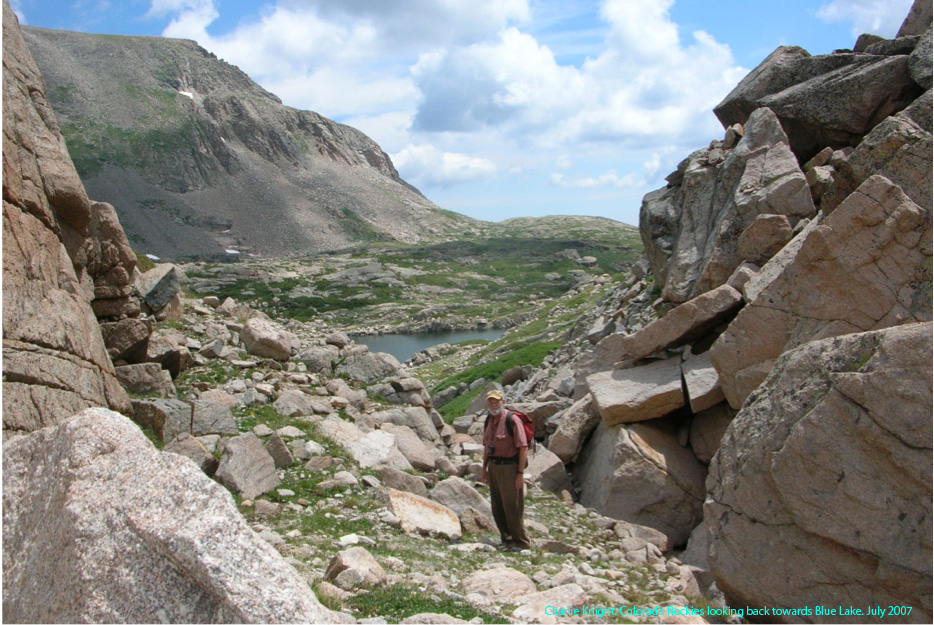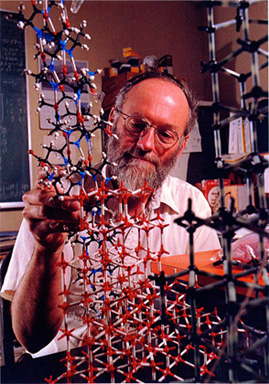 |
||||||||||||||||||||
2nd Ice-Binding Protein Conference |
||||||||||||||||||||
August 4 - 7, 2014. Hokkaido University, Sapporo JAPAN |
||||||||||||||||||||
|
||||||||||||||||||||
AWARDS |
||||||||||||||||||||
| Lifetime Achievement Award to Dr. Charles Knight | ||||||||||||||||||||
Three years ago at IBP2011, we were able to honour Art Devries with the first Lifetime Achievement Award for his work that set the antifreeze protein field in motion. We are continuing this tradition three years later at IBP2014 and are delighted to be able to give the 2014 Lifetime Achievement Award to Dr. Charles Knight. |
||||||||||||||||||||
There are times in scientific research when the cross-fertilization between two different disciplines can move the field forward in a quantum leap. This is exactly what happened when Charlie’s expertise was brought to bear on the understanding of how antifreeze proteins interact with their ligand – ice. Charlie, originally trained as a geologist, has spent most of his career as an atmospheric scientist at NCAR in Boulder, Colorado. Figure 1 shows Charlie nearby other boulders in the Colorado Rockies. |
||||||||||||||||||||
 |
||||||||||||||||||||
Charlie’s first exposure to antifreeze proteins came when he was invited by Jack Duman to give a talk on the nucleation and growth of ice crystals at the Cryobiology meeting in St. Louis in 1981. Initially, Charlie was skeptical about freezing hysteresis – the lowering of the freezing temperature below the melting point. Following from this meeting, Art DeVries provided him with some AFGP, so he could convince himself that freezing hysteresis really existed. Well, he was convinced, and so began a series of seminal contributions to the field. One of the first thoughts was that freezing hysteresis should be accompanied by melting hysteresis. This was neatly demonstrated by studying the faceting and other effects of AFPs on ice pits where they demonstrate a resistance to melting and show that ice can be superheated. This proof was published in Science in 1989, one of many papers that Charlie has published in high impact journals. |
||||||||||||||||||||
 |
 |
 |
||||||||||||||||||
Following from the observation of stable thermal hysteresis is the argument that antifreeze proteins must irreversibly bind to ice. Another Eureka moment for Charlie came from growing a single-crystal hemisphere in a dilute antifreeze solution, with the intention that the bound protein would be incorporated in the ice and overgrown. The antifreeze protein was conveniently revealed by sublimation, and these etch patterns showed its adsorption "plane" on ice. For the linear, alpha-helical antifreezes (Figure 2) the resultant etches also gave the orientation of the molecules on that plane. Those of us who have learned this technique directly or indirectly from Charlie have benefitted greatly from this ground-breaking work. |
||||||||||||||||||||
Charlie has made many other contributions at the interface of ice physics and antifreeze proteins – on the recrystallization of ice in the presence of AFPs, and in explaining the effect of antifreeze protein concentration on thermal hysteresis value despite the irreversibility of AFP binding. I hope we will hear more about these advances in today’s talk. We have appreciated Charlie’s contributions over several decades at many levels, as a scientist, innovator, senior colleague, and even as a reviewer who has improved the accuracy and quality of many publications. Today (August 6, 2014) we are here in Sapporo to celebrate these accomplishments with the presentation of the Lifetime Achievement Award (Figure 3). But as the name suggests it is a lifetime award, and the fact that you (Charlie) are able to retire from the National Centre for Atmospheric Research does not release you from our earnest wishes that you will continue to participate in the antifreeze field. |
||||||||||||||||||||
On behalf of all of us here, and other colleagues who would like to here but could not attend, Sakae would like to present you with a plaque to commemorate your contributions, and we have a little gift for you that symbolizes the recrystallization of ice and the growth of small ideas into hypotheses and theories (Figure 4). It also symbolizes the global antifreeze community present here today who have benefitted from your research and scholarship, and as Ido Braslavsky remarked it reminds us of the ice hemispheres you pioneered for the etching experiments (written by Peter Davies). |
||||||||||||||||||||
| Best Presentation Award to Seven Students | ||||||||||||||||||||
The volunteer members of the conference (Drs. Gen Sazaki, Jack Duman, Brian Sykes, and Maddalena Bayer-Giraldi) scored the ability of the students who performed the poster presentation, and decided to provide the Best Presentation Award to Ran Drori, Shiran Zalis, Hauke Kobarg, Jing Cheng, Joana Gronow, Corey Stevens, and Federico Lanciai among the total of 21 candidates. |
||||||||||||||||||||